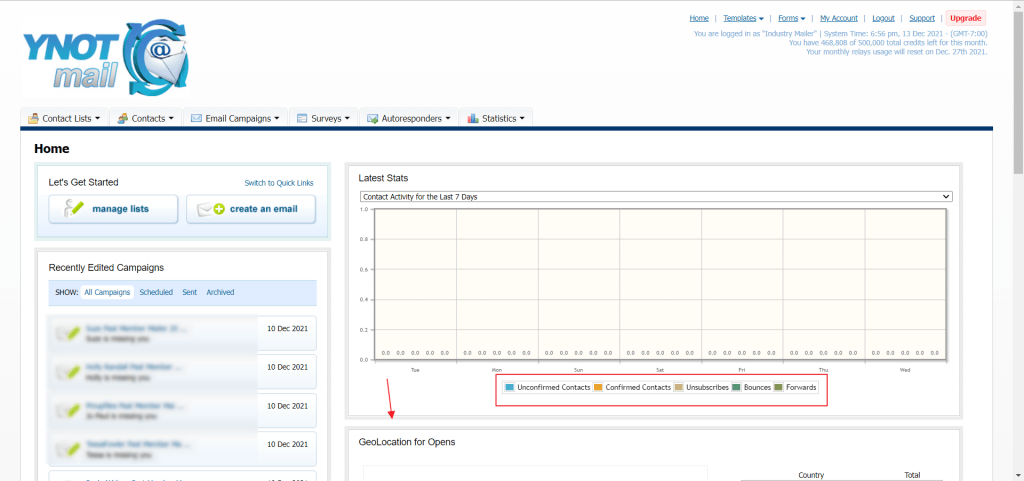There are lots of digital marketing terms that need to be familiar, and I just listed some of the most common and important words that can be heard from those digital marketing people. At least knowing the meaning can help us stay on the same page while dealing with those online business marketing topics.
These are all can be found on different blog articles online, the purpose of my collection is to have my own understanding and explanation for my quick references. Can be helpful to you or
Marketing Terms:
A/B Testing (or Split Testing)
Process of doing a test for two difference marketing campaigns to distinguish which is more effective and can give a good result.
#Affiliate marketing – A digital marketing strategy online where a person or Business is promoting products or services using a referral link to get commissions.
#B2B (Business-to-Business)
A business conducted when selling a product or service between two businesses.
#B2C (Business-to-Consumer)
A business that sells directly to consumers is described as B2C. They control their product from start to finish, from development to the final sale.
#Off-Page Optimization
Off-page optimization is everything you can do to improve your organic search rankings that does not involve your actual website. This includes anything you can do to create high-quality backlinks and further drive your exposure.
#On-Page Optimization
On-page optimization involves actions you take on your website to improve your organic search engine rankings and can include improving meta tags or optimizing your website content.
#Backlink
This is a link that points users from another website to your page. These helps your website rank on SEO as it’s find by search engine crawlers.
#Call-to-Action (CTA)
A call-to-action is an instruction for website visitors to take action on a message. The action could be to click a link, fill out a form, subscribe to an e-newsletter, or make a phone call. Calls-to-action can be presented as just text or an eye-catching image.
#Landing Page
Any page that gets traffic from anywhere other than the same pages on your site — hence the name landing. A landing page is typically comprised of copy, images, and a form.
#Lead Generation
Lead generation is the process for acquiring new leads. Online lead generation is done by providing valuable content to website visitors in exchange for their contact information.
#Link Building
Link building is the act of increasing the number of outside sites linking back to yours (backlinks). This process typically involves creating high-quality content (interesting, engaging) that others want to share.
#SEO (or Search Engine Optimization)
Search engine optimizing a webpage or website means adjusting on-page and off-page SEO factors in order to improve the page’s ranking in search results.
#Workflow (or Drip Campaign)
A workflow is a series of events that slowly or quickly move a lead through a company’s lead nurturing process. A workflow could be a set number of automatic emails that are sent to prospects that take different actions, such as viewing a pricing page or scheduling a free consultation.
#Clickbait
Clickbait is the type of content that hooks people with a highly promising headline that provides very little actual information, getting them to click through to their content or website. Clickbait is more and more frowned upon in the digital marketing world, and sites like Facebook are making changes to their algorithms in order to determime this type of posting.
#Crowdsourcing
Crowdsourcing is the process of getting work, funding, or ideas from a crowd of people online. A great example of crowdsourcing is Wikipedia.
#Influencer
The digital marketing term “influencer” is just what it sounds like, a person who has the power of influence over their social media audience. These are people you want sharing your content and interacting with your brand.
#Viral
Going viral refers to a piece of content that is shared over and over again because of its perceived informational or entertainment value. If your content (picture, video, article, etc.) goes viral it will be seen by far more people and have a far greater impact on brand awareness, conversions, etc.
Analytics Terms:

#Analytics
Process of measuring the performance of a website’s or digital marketing campaign such as visits, page view, hits, sale, and other data information.
#Click-Through Rate (CTR)
Click-through rate is the percentage number of people that click on a link out of the total number of people who view the email, social ad, or call-to-action (CTA) on a website page. For example: Let’s say that we have a CTA on a blog post, and that CTA was seen by 1000 unique people, but only 50 people clicked on the CTA. This means that the click-through rate is 5%.
#Conversion Rate
Conversion rate is the percentage of people who take the desired action on your website or social media ads such as signing to a form, downloading contents, or buying goods. Conversion Rate % = (Views / Signups) x 100
#Organic Traffic
This is the traffic your site receives from unpaid search results, hence it is considered organic. This is one of the main goals of SEO and content marketing because it provides a powerful platform for long-term growth.
#Bounce Rate
A bounce rate is when a visitor lands on your website and immediately clicks the back button or leaves your website. They are “bouncing” off your website.
#Dimension
A descriptive attribute or characteristic of data. Browser, Landing Page and Campaign are all examples of default dimensions in Analytics.
#Event
A type of hit used to track user interactions with content. Examples of user interactions commonly tracked with Events include downloads, mobile ad clicks, gadgets,
#Page Performance
Page performance takes into account on-page SEO, website traffic, CTA conversion rate, and contacts acquired.
#Page Rank
Your page rank is how trustworthy your particular site is as determined by Google’s algorithm. Sites are ranked on a scale of 0 to 10, with 0 meaning you don’t rank in their search engine (not good) and 10 being given to fewer than 150 sites (most of them being Google-, Apple-, or Adobe-owned).
#Conversion Rate
The percentage of people who have completed the desired action (clicked through to a site, filled out a form, etc.) divided by the total number of people to whom the action was marketed.
#Cost-Per-Click (CPC or Pay-Per-Click or PPC)
Cost-per-click is an amount an advertiser pays every time someone clicks on their social ad. It doesn’t matter how many people see it, the advertiser will only be charged for actual click through.
#Cost-Per-Impression (CPI or Cost-Per-Thousand or CPM)
Cost-per-impression is an amount an advertiser pays for 1,000 impressions on their social ad.
#Impressions
Impressions are the number of times your content is displayed. For example: on Facebook, impressions are the number of times someone sees your social update in their newsfeed. Impressions are a key metric for measuring campaign success in digital marketing campaigns.
#Clicks Per Delivered (CPD)
When reporting on your email success, this digital marketing term is important to understand. It’s simply the number of clicks (on your link) divided by the number of emails successfully delivered to their intended destination (inbox). The result is your CPD or clicks-per-delivered rate.
#Clicks Per Open (CPO)
The number of clicks (on your email’s link) divided by the number of opened emails will give you your CPO or clicks-per-open rate.
Newsletter Terms:
#Opt-in (or Subscribe)
An opt-in is when a person provides their email address to a company or individual because they are choosing to receive emails from that company or individual.
#Opt-out (or Unsubscribe)
One of the digital marketing terms that email marketers need to pay attention to, an opt-out is when a person subscribed to an email list no longer wants to receive email communication from a specific company or individual, so they remove their email address from the list.
#Recipients
A person who will receive your email.
#CC (Carbon Copy)
Sending a copy of an email that a recipient can see.
#BCC (Blind Carbon Copy)
Sending a copy of an email that is hidden to all receiver.
#Bounce
An email cannot receive because of an email server issues. Some reasons might be full storage or blocked email address.
#Spam
Or junk email, is unsolicited email, mostly send in bulk for the purpose of marketing.






